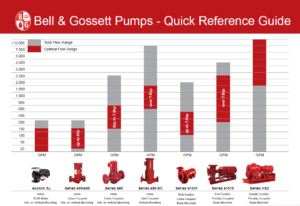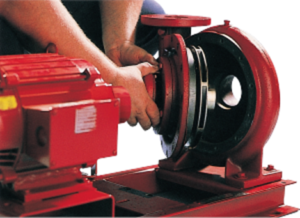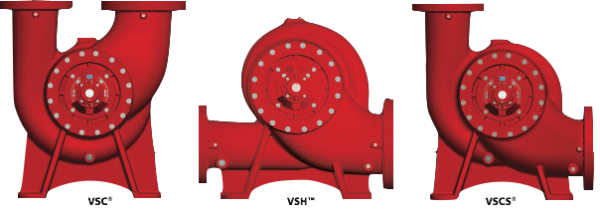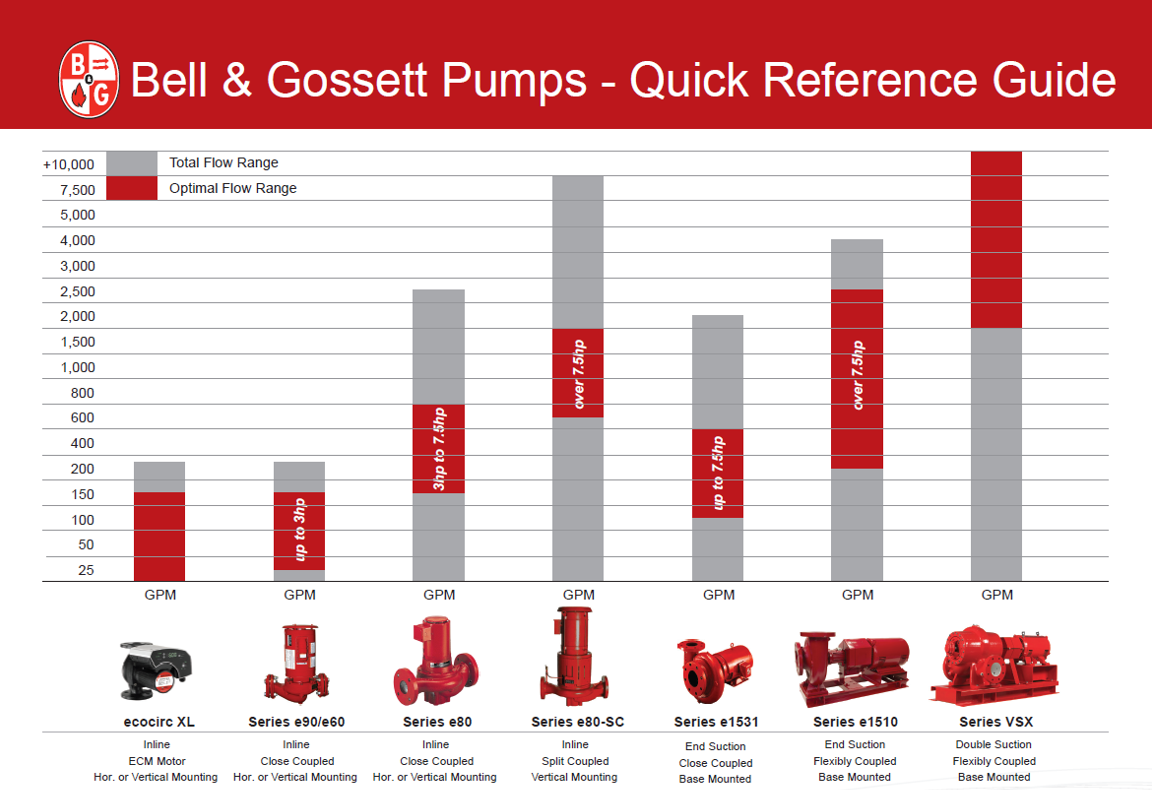As we conclude this series on how to select a centrifugal pump for your hydronic applications, we want to leave you with the following “best practices” for overall safe, efficient, and long lasting performance.
HVAC Centrifugal Pump Best Practices
Specify Pumps with an OSHA Approved Coupler Guard
This should be a non-negotiable feature of any flexible coupled pump. Coupler guards prevent any dangling items (neckties, chains, etc.) from getting caught up in the coupler as the shaft is spinning. Such incidents can cause serious injury and have been known to result in lawsuits.
State and Federal codes state that when a motor is flexibly-coupled to a pump shaft, there should be an OSHA-approved guard. Bell & Gossett provides OSHA-approved coupler guards, like the one shown below, as a standard feature on any pump it sells. That is not the case with every manufacturer, so it is essential that you include this requirement in the specs. If not specified, you will get the old-style, U-shaped strip of sheet metal which is not OSHA approved.
Look for a Pump with a True Back Pull-Out Design
A pump with a true back-pullout design as shown below allows servicing the pump without disturbing the motor or piping.
Select a Pump with a Solid-Foot Mounted Volute
Pumps with an integrally cast volute foot help you maintain pump alignment during maintenance. Also, since the piping weight can be quite heavy, this support keeps distortion from occurring which can lead to premature failure of your piping system. This is especially important on hot water systems because of the continual pipe expansion.
Choose a Drop-out Spacer Coupling
This allows for removal of the bearing frame and rotational element without disturbing the pump alignment or electrical connections. Make sure the coupler type specified will operate without issue when used with a variable speed drive (VFD).
Consider Specifying a Trolley and Gantry for large Inline Pumps
Remember, the motors for vertical inline pumps must be removed for servicing the pump bearings. Since these motors tend to be heavy, do your client a favor and include a “hoisting” mechanism so that the motor can be carefully lifted away from the pump for servicing. If this is not an option, make sure there is plenty of space around the pumps so a contractor can locate equipment to service the vertical inline pump.
Double Suction Pump Pipe Orientation
You want to avoid using an elbow that has a plane that is parallel to the pump shaft. Otherwise the flow will be severely non-uniform, creating fluctuating high pressures on one side of the impeller inlet, while starving the other side. This can also cause noisy operation and even damage due to cavitation. This needs to be a consideration when choosing between a base-mounted or vertical inline double suction pump. If the pump shaft is parallel to the elbow then a suction diffuser should be used.
For double suction base-mounted pumps, depending on the piping arrangement, you can better orient the suction and discharge flanges in one of the following ways to eliminate an elbow:
- Horizontal discharge and horizontal suction (VSH)
- Vertical discharge with horizontal suction (VSCS)
- Vertical discharge and vertical suction if you have a Vertical split case pump (VSX)
Pump Specification Chart
Finally, the chart below is an excellent tool and general reference for when to specify which type of pump. As you will notice, all the pump types have flow ranges that are beyond what is actually optimal in terms of operating efficiency – sometimes well beyond. Ideally you want to stick with a pump type that will operate within its optimal flow range (shown in red). This not only improves efficiency, but also helps to extend service life.
Read the Entire How to Pick an HVAC Centrifugal Pump Series:
- Part 1: Designing for Owner Satisfaction
- Part 2: Types of Pumps and Seismic Considerations
- Part 3: Mechanical Room Space & Type of Pump Selected
- Part 4: Pump Coupling Types — Close, Split or Flexible Coupled?
- Part 5: Choosing a Single or Double Suction Pump
- Part 6: Internally Vs. Externally Flushed Mechanical Seals
- Part 7: Mechanical Seal Materials
- Part 8: Motors for HVAC Centrifugal Pumps (Continued)
- Part 9: Over speeding HVAC Pumps & Motors
- Part 10: Over Speed an HVAC Pump using a VFD
- Part 11: Best Practices for Safety and Performance






